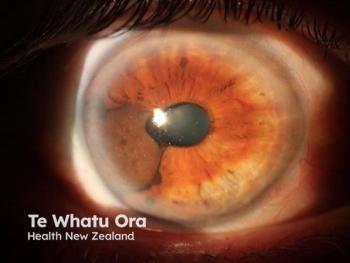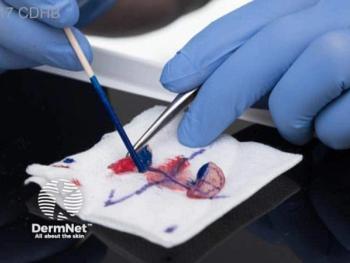
Morphology Drives Melanoma Risk
Specifying histologic subtypes can drive better outcomes for patients and improve research.
Sex, age, and stage at diagnosis only partially explain the poor prognosis of nodular melanoma and acral lentiginous melanoma (ALM), according to a recent study in the British Journal of Dermatology. Accordingly, authors of the first large-scale, population-based comparison of 5-year survival by melanoma subtype argue that physicians should also consider melanoma morphology a key prognostic indicator.1
“We hope that dermatologists, and the surgeons and pathologists with whom they work, will become more attuned to the importance of a precise pathological diagnosis, both in managing individual patients and in enabling a more accurate picture of melanoma pathology and survival at the population level,” said lead author Veronica Di Carlo, MSc. She is a research fellow with the Cancer Survival Group in the Department of Non-Communicable Disease Epidemiology at London School of Hygiene and Tropical Medicine in London, England.
Current clinical guidelines indicate that histologic subtype is only an optional item for inclusion in pathology reports.2 “We hope our findings will encourage reporting of the histologic subtype of melanoma on the pathology report, as well as the other key features such as size, location, thickness, and ulceration,” said Di Carlo.
Using data from more than 1.5 million adults diagnosed with melanoma between 2000 and 2014 who were enrolled in the CONCORD-3 trial,3 investigators found the following:
- Nodular melanoma (7% to 13% of melanomas worldwide) had the poorest prognosis everywhere. Estimated age-standardized 5-year net survival for patients diagnosed between 2010 and 2014 ranged from 72% to 80% in the United States, Canada, New Zealand, and Australia, versus 58% in Costa Rica and Poland.
- ALM accounted for less than 2% of cases in North America, Europe, and Oceania, versus 6% to 7% in Asia and Central and South America—including more than 10% in Korea, Singapore, Taiwan, Columbia, Costa Rica, Guadalupe, and Martinique. Age-standardized 5-year net survival for patients diagnosed with ALM between 2010 and 2014 ranged from 66% (Taiwan) to 95% (Belgium).
- Using national registries in Germany, Spain, and Norway, investigators estimated that compared to superficial spreading melanoma, patients with nodular melanoma faced 13.5-fold, 6.7-fold, and 4.1-fold excess hazard for death, respectively—even after controlling for sex, age, and stage at diagnosis. The corresponding figures for ALM were 10.8, 5.0, and 2.2.
The perception that melanoma risk is lower in dark-skinned people than in fair-skinned people is considered one of the reasons for delayed diagnosis among dark-skinned people, Di Carlo told Dermatology Times®. Because healthcare providers may often be less suspicious of melanoma in dark-skinned patients, she explained, providers may be less likely to offer regular full-body skin examinations.
“A high proportion of melanoma in dark-skinned people occurs in sun-protected areas of the body, such as the palms, the sole of the foot, and underneath the nails,” added Di Carlo. “Delays in the diagnosis of this subtype of melanoma are well-documented and are probably due to the hidden location of the lesion, the unusual clinical presentation, low public awareness, and misdiagnosis by healthcare professionals, especially when the lesion is not pigmented.”
Regarding nodular melanoma, American Joint Committee on Cancer staging guidelines omit this subtype based on results of a single-institution study published in 1978.4,5 However, a more recent population-based U.S. study of superficial spreading and nodular melanoma showed that morphology indeed predicts survival.6
To date, morphologic classification has not been considered prognostically helpful because it is believed that whatever the histologic subtype, clinical progression of all melanomas proceeds similarly, and behavior converges upon metastasization.6,7 Therefore, wrote Di Carlo and colleagues, recommended treatment options do not differ between morphological subtypes at a given diagnostic stage.
Ignoring morphology creates research challenges as well. The fact that around 42% of tumors in the study were classified as “malignant melanoma, not otherwise specified” limited interpretation of net survival estimates for all melanomas with specific morphological subtypes.
The study also highlights the need for health policies targeting specific populations in areas such as Asia and Latin America, where dangerous melanoma subtypes occur disproportionately, authors wrote.
“Several Latin American countries have implemented recommendations for protection against ultraviolet radiation (UVR), the major risk factor for cutaneous melanoma,” said Di Carlo. In Chile, employers are legally obligated to implement effective measures to protect workers from occupational exposure to UVR, she added. “In Peru, legislation requires protection of children in schools by limiting activities that involve unprotected UVR exposure, regulating school uniforms, and including education on the risks of UVR exposure in educational programs.”
National skin-cancer awareness campaigns also have been implemented in Argentina, Cuba, Panama, Peru, and Uruguay, she added. In most Asian countries, by contrast, such recommendations and awareness campaigns remain limited.
“To our knowledge,” Di Carlo added, “there are no awareness campaigns aimed at educating general practitioners and the public in recognition of the early signs of acral lentiginous melanoma. Public health efforts to increase awareness of this rare but aggressive form of melanoma, together with specific training in diagnosis aimed at clinicians, may reduce the time between first consultation and a definitive diagnosis and lead to a better prognosis.”
Discloure:
Di Carlo reports no relevant financial interests.
Refereneces:
1. Di Carlo V, Stiller CA, Eisemann N, et al. Does the morphology of cutaneous melanoma help explain the international differences in survival? Results from 1,578,482 adults diagnosed during 2000-2014 in 59 countries (CONCORD-3) [published online ahead of print, 2022 Mar 29]. Br J Dermatol. 2022;10.1111/bjd.21274. doi:10.1111/bjd.21274
2. Swetter SM, Tsao H, Bichakjian CK, et al. Guidelines of care for the management of primary cutaneous melanoma. J Am Acad Dermatol. 2019;80(1):208-250. doi:10.1016/j.jaad.2018.08.055
3. Allemani C, Matsuda T, Di Carlo V, et al. Global surveillance of trends in cancer survival 2000-14 (CONCORD-3): analysis of individual records for 37,513,025 patients diagnosed with one of 18 cancers from 322 population-based registries in 71 countries. Lancet. 2018;391(10125):1023-1075. doi:10.1016/S0140-6736(17)33326-3
4. Balch CM, Buzaid AC, Soong SJ, et al. New TNM melanoma staging system: linking biology and natural history to clinical outcomes. Semin Surg Oncol. 2003;21(1):43-52. doi:10.1002/ssu.10020
5. Balch CM, Murad TM, Soong SJ, Ingalls AL, Halpern NB, Maddox WA. A multifactorial analysis of melanoma: prognostic histopathological features comparing Clark's and Breslow's staging methods. Ann Surg. 1978;188(6):732-742. doi:10.1097/00000658-197812000-00004
6. Lattanzi M, Lee Y, Simpson D, et al. Primary melanoma histologic subtype: impact on survival and response to therapy. J Natl Cancer Inst. 2019;111(2):180-188. doi:10.1093/jnci/djy086
7. Ackerman AB, David KM. A unifying concept of malignant melanoma: biologic aspects. Hum Pathol. 1986;17(5):438-440. doi:10.1016/s0046-8177(86)80030-2
Newsletter
Like what you’re reading? Subscribe to Dermatology Times for weekly updates on therapies, innovations, and real-world practice tips.

















